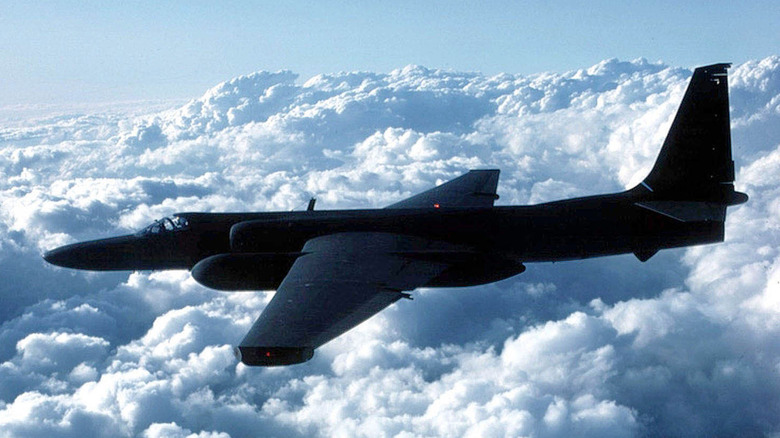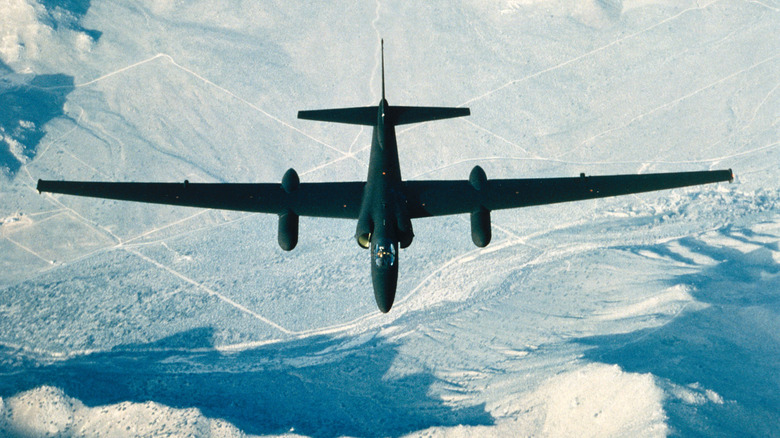Here's Why The US Air Force Is Retiring The Legendary U-2 Spy Plane
An urban legend connects one of rock music's greatest bands with one of history's most famous spy planes. Bono, the lead singer of U2 (the Irish rock band from Dublin), was born on May 10, 1960. The Soviet Union shot down an American U-2 spy plane while it was flying a reconnaissance mission over the U.S.S.R. on May 1, 1960. Some say that tenuous connection is the reason the band took up the name, but ... probably not. However, the U-2 namesake became synonymous with spy planes as a result of both the artist and the U-2 Incident of 1960.
The first U-2, also known as the "Dragon Lady," went into military service in 1956. The "U" stood for utility, and was built by Lockheed Martin so that the CIA and U.S. Air Force (USAF) could effectively conduct high-altitude intelligence, surveillance, and reconnaissance (ISR) missions over Cold War enemies, including both Russia and China at the time.
Twenty U-2s were initially built by Lockheed (surprisingly under budget), with each plane costing less than $1 million. Even though the last new U-2 was built in 1989, thirty-one are still routinely used to gather intelligence around the globe. The spy plane has a wingspan of 105 feet, and typically flies solo missions (though there are two-seater configurations) in excess of 70,000 feet (near space), so pilots must wear fully pressurized flight suits similar to what astronauts wear — like with the SR-71 Blackbird.
Patrolling the unfriendly skies since 1956
The U-2 uses various instruments to gather intelligence; such as multi-spectral electro-optic, infrared, and synthetic aperture radar devices. Until recently, some very old-school tech was still being used in these peeping planes as well.
Last summer, the wet film cameras were finally removed and replaced with current-gen digital equipment. The canisters used to hold the film were huge, and needed to be unloaded and taken to Beale Air Force Base in California (where the fleet is headquartered) in order to be developed in a dark room.
Over the last two decades, the Air Force has tinkered with the idea of sunsetting one of its most indispensable warriors but, for one reason or another, allowed the U-2 to continue patrolling enemy skies. However, now it looks like the U-2 won't be able to avoid the forward progress of time much longer.
The Air Force recently announced that it would retire the U-2 in the fiscal year of 2026, in a move to "reshape" how it gathers high-altitude intelligence in the age of high-tech, pilotless drones. Budget documents were presented to Congress showing its plans to keep the current U-2 fleet up and running until the end of September 2025.
After that, the USAF plans on going in a different direction, perhaps through the continued use of its RQ-4 Global Hawk drones — which have also been slated for retirement at least once in the past — or go with something entirely new.

